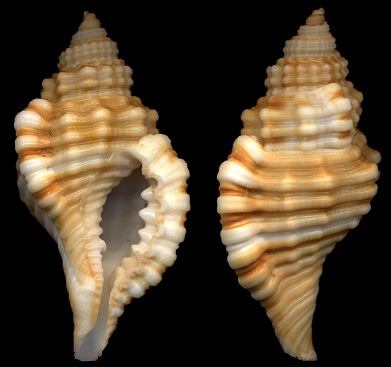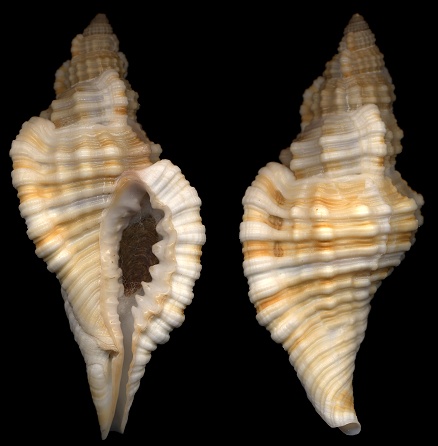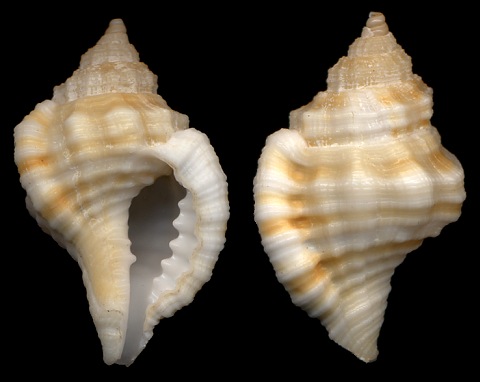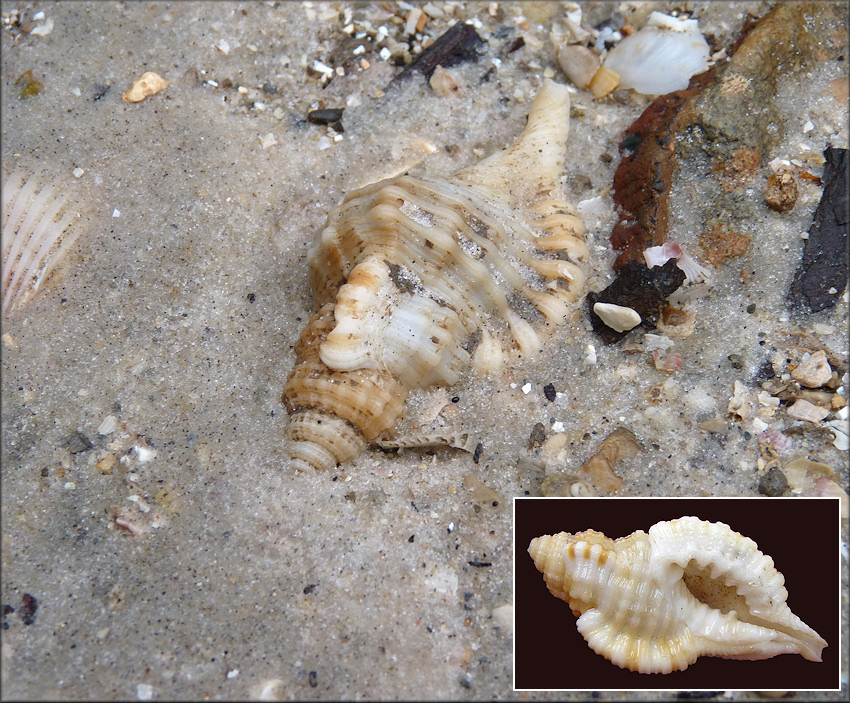| Cymatium (Monoplex) krebsii (Mørch, 1877) |
 |
| Trawled by scallop boat off the Florida Panhandle (43 mm.) |
 |
|
Trawled by shrimper off Punta Petuca, Honduras (92 mm.) |
|
juvenile |
|
|
|
Dredged from 160 feet, Pickles Reef, Monroe County, Florida Keys (23 mm.) |
|
During the early 1980's commercial scallop fisherman plied their trade off Duval County northeast Florida. The by-catch as well as the empty scallop shells from this fishery were dumped in several locations near the coast to include Camp Alimacani on Xalvis Island immediately adjacent to the Ft. George River. For several years this dump site was a very productive location for local shell enthusiasts - yielding deep water shells that were not otherwise easily available. On January 12, 2014, some 30 years after the shells/by-catch were dumped, this reporter visited the former Camp Alimacani which is now known as Alimacani Park and boat ramp - part of the City of Jacksonville park system. Despite the passing of three decades and severe erosion of the shoreline at the site, deep water shells were still easily found such as the Cymatium krebsii (pictured below in situ as found and with the cleaned up shell in the inset). In addition to its association to the now long defunct scallop fishery of 30 years ago, Xalvis Island has an interesting history and was the site where some of the first Europeans to arrive in northeast Florida landed in 1562 and the site of a Timucuan Indian settlement known as Alimacani. |
|
|
|
Considered by some to be a subspecies of Cymatium corrugatum |
|
(up to 75 mm.) |

